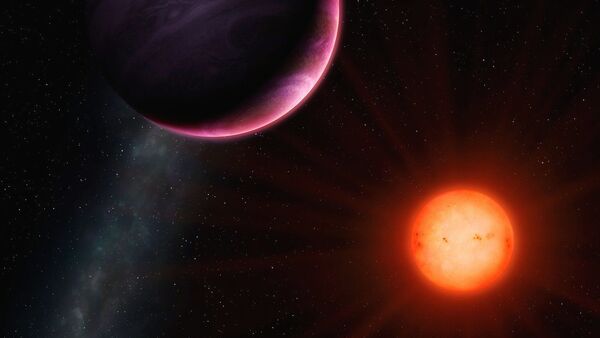A huge Jupiter-like exoplanet was found orbiting a tiny star some 31 light years away, forcing astronomers to review their knowledge of how star systems are formed, The Daily Mail reported Friday.
According to the report, scientists have until now believed that large gas planets form as a solid core of ice and rock that then attracts surrounding gas from the disc of matter that orbits a young star.
Contrary to this theory, the newly-discovered planet that orbits the red dwarf GJ 3512 did not form as a solid core, but apparently came into existence of its own from orbiting stellar matter due to gravitational instabilities. To put it another way, a large chunk of the star disc collapsed into itself under its own mass, the scientists stated.
“Usually we think of giant planets starting life as an icy-core, orbiting far out in a disc of gas surrounding the young star, and then growing rapidly by attracting gas onto itself. But the authors [of the new study] argue that the discs around small stars don't provide enough material for this to work,” astrophysicist Peter Wheatley of the University of Warwick, said.
“This find prompts us to review our models,” admitted Hubert Klahr of the Max Planck Institute for Astronomy in Germany, the author of the paper.
GJ 3512 is a small star, estimated to be a mere 12 percent of the mass of our Sun, which itself is far from being large on a galactic scale. The gas giant planet orbiting GJ 3512 is almost as big as its host star, according to Juan Carlos Morales of the Institute of Space Studies of Catalonia, a lead author on the study.
Very little is known about the planet, although study authors calculate that the planet is at least half as heavy as Jupiter, and that its stellar orbit equals approximately 200 Earth days. The host star’s tiny size complicates observations and scientists cannot currently measure the planet’s size with a sufficient level of precision, The Daily Mail reports.
According to Yale University astronomer Greg Laughlin, as some 4,000 exoplanets have been identified, the detection of another new exoplanet is not necessarily noteworthy.
But “one that challenges current theories of planet formation can animate astronomers,” he said.

